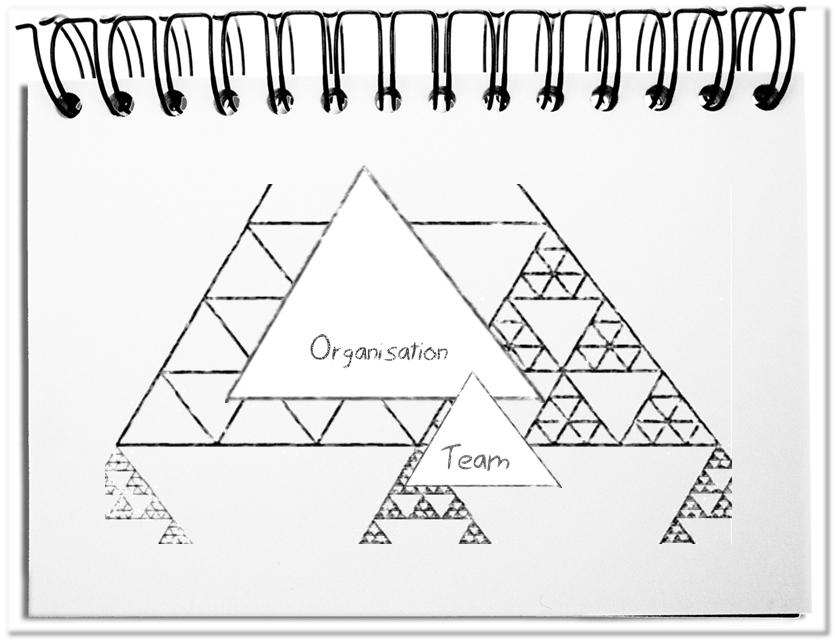The digital transformation is actually the level of a networked, decentralized IT that used to be characterized by client-server architectures and that is nowadays on the way towards an open, fully globalized networked IT landscape. Industry 4.0 is accompanied by the next generation of digitization – more automation of production and business processes and, above all, artificial decision-making in all areas. However, application only works, if companies adapt to it. At the time of digitization 1.0, people talked about CIM, the fractal factory and Lean Management. Today, it is forgotten that the answers to some current questions were already described at that time – end-to-end processes, customer centricity, vital structures and, above all, the increased involvement of affected people. The fractal has already provided the aspects that are still crucial for an agile team.
The look at the fractal lives from forgetting earlier ideas of remits (see: The Fractal Company: A Revolution in Corporate Culture). The new units, the PODs, holons and platforms, behave like an enterprise within the enterprise and follow the same criteria on each level of detail.
- Self-similarity
The focus on a unit is made with a certain scaling. The self-similarity expresses the fact that the basic pattern remains the same on the different levels. For example, units, no matter whether divisions, departments or teams, process inputs into outputs based on described processes. - Self-organization
The fractal itself takes care of its structure and the distribution of tasks. The processes depend on the working style of each employee and can vary from one unit to another. Decision paths follow natural conditions and not general guidelines. Influence from outside is taboo, if not forbidden. - Viability
Each fractal must be viable in itself, i.e. it can produce the desired result, whether it is a product or a service. The Minimal Viable Products (MVP) are made possible by the complete coverage of related features. The purpose of the fractal is not growth, but survival – viability. This results in an over time changing purpose of a fractal due to new requirements. - Self-optimization
The interaction with the environment, suppliers and customers, requires the continuous amelioration of the fractal. This further development is an important task of the agile team. Since the fractal is not reduced to a single purpose in the long run, the revision of existing processes creates the freedom to find and establish new activities. - Target consistency
Decisive for the fractal organization is the consistency of the individual targets across the different levels. The ultimate goal is the fit overall fractal. Inconsistent targets would burden the overall amelioration. This means that a fractal cannot be simply detached from the overall context, but that, in addition to its own survival, it also takes into account the survival of the whole. Nonetheless, should a split-off occur, then it is a matter of creating a new whole – remember 3M, who have created a previously non-existent offer and a new business area – Post-It.
One should not be irritated by the angular structure of the fractals although today’s agile teams tend to be portrayed in a more rounded way. This does not alter the aforementioned characteristics. It’s about understanding the units that are nested within themselves.
Bottom line: While in the nineties of the last century the emphasis was on the use of new technical possibilities, today the need for action arises from the unimaginable acceleration of the business and the dissolution of geographical distances by the Internet. Standard processes are performed by computers at the speed of light. Everything else people have to do as timely as possible. This requires agile teams that are similar to each other, organize themselves, and are viable, continuously ameliorate and follow common goals. In addition, cross-sectional fractals are needed to provide standard services such as IT, accounting, human resources, etc. This allows the value-adding fractals to concentrate on their business. It makes work easier to remember and reuse the insights of the past, such as the idea of the fractal – the archetype of agile teams.

